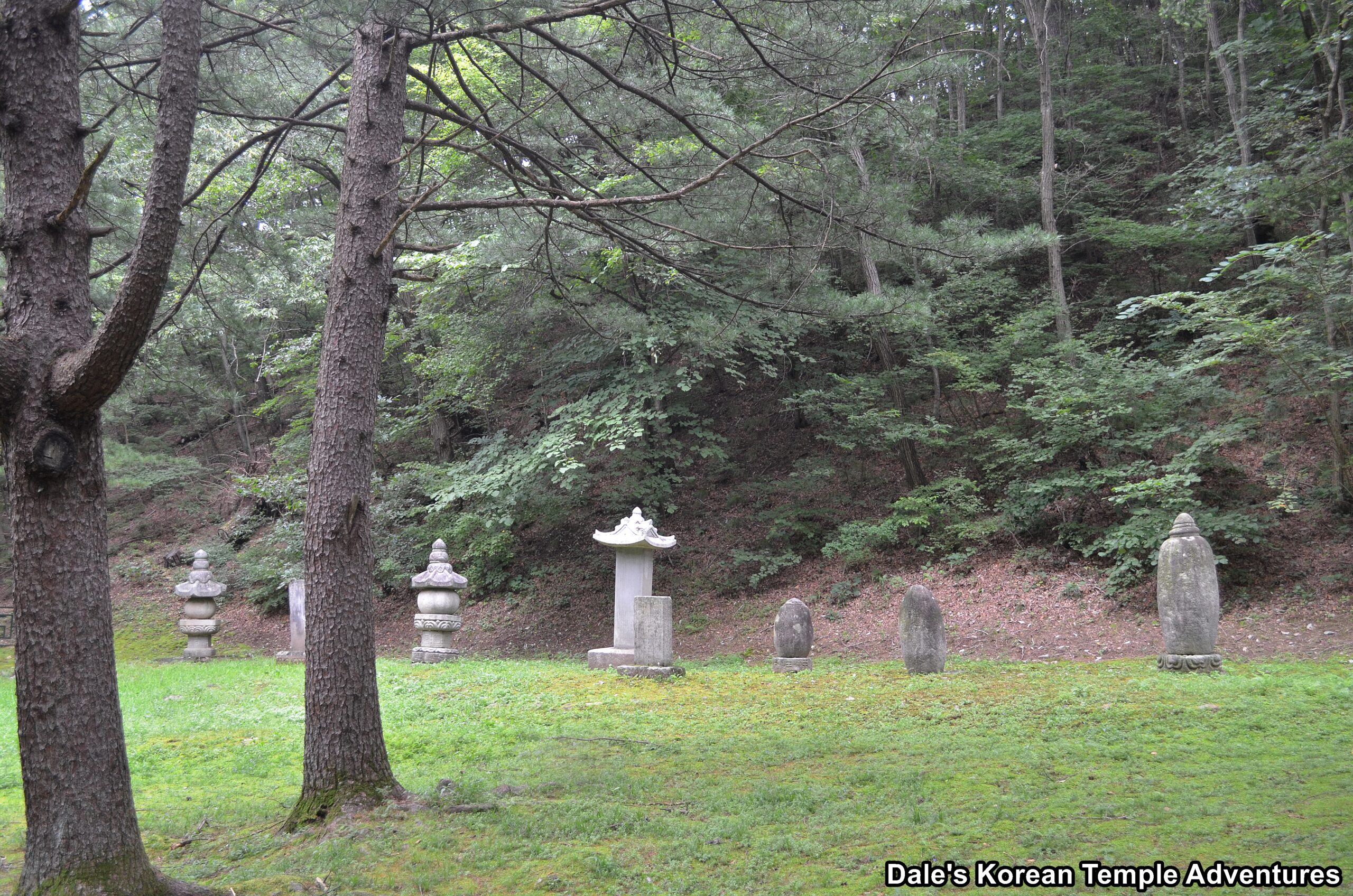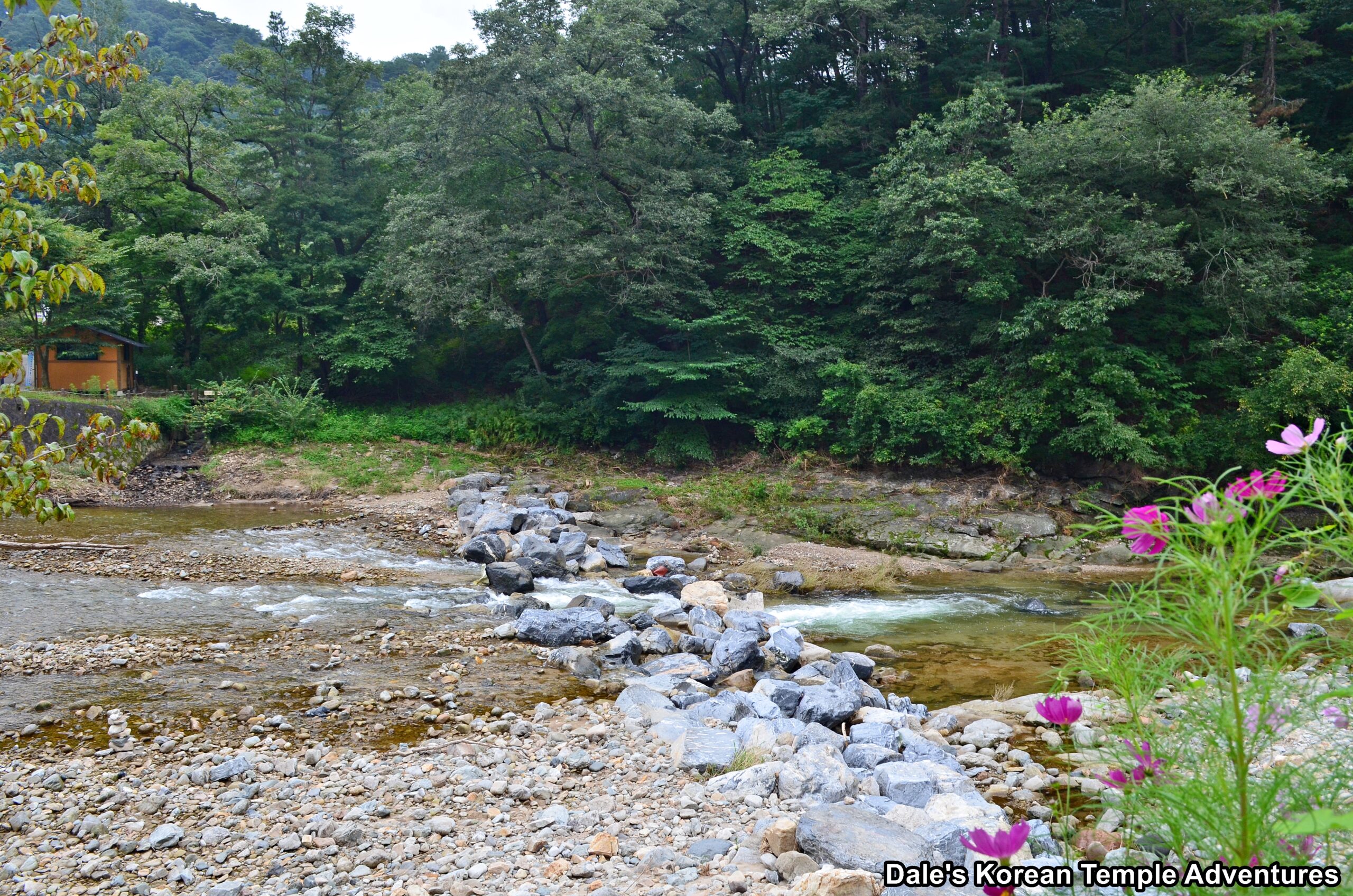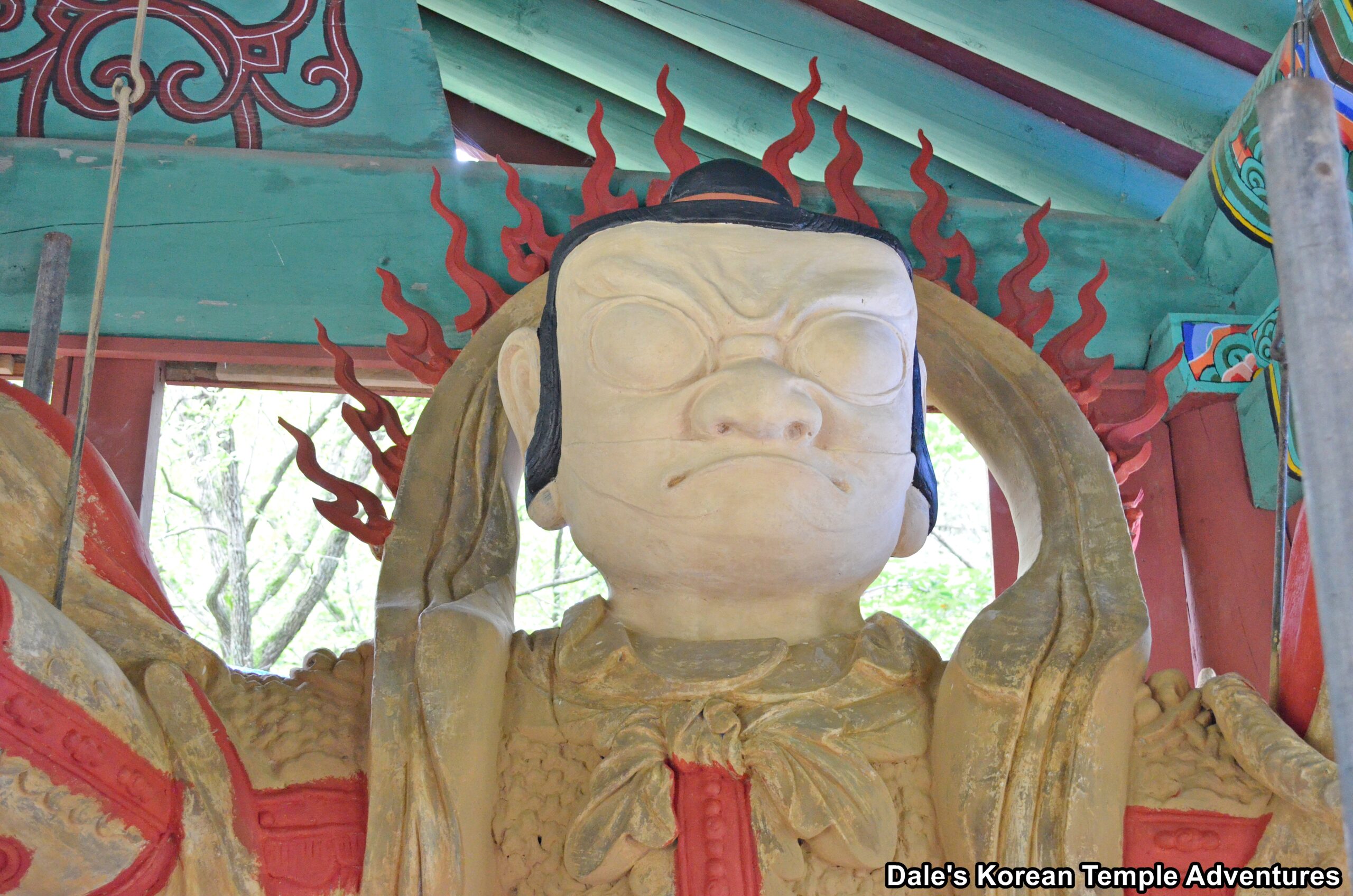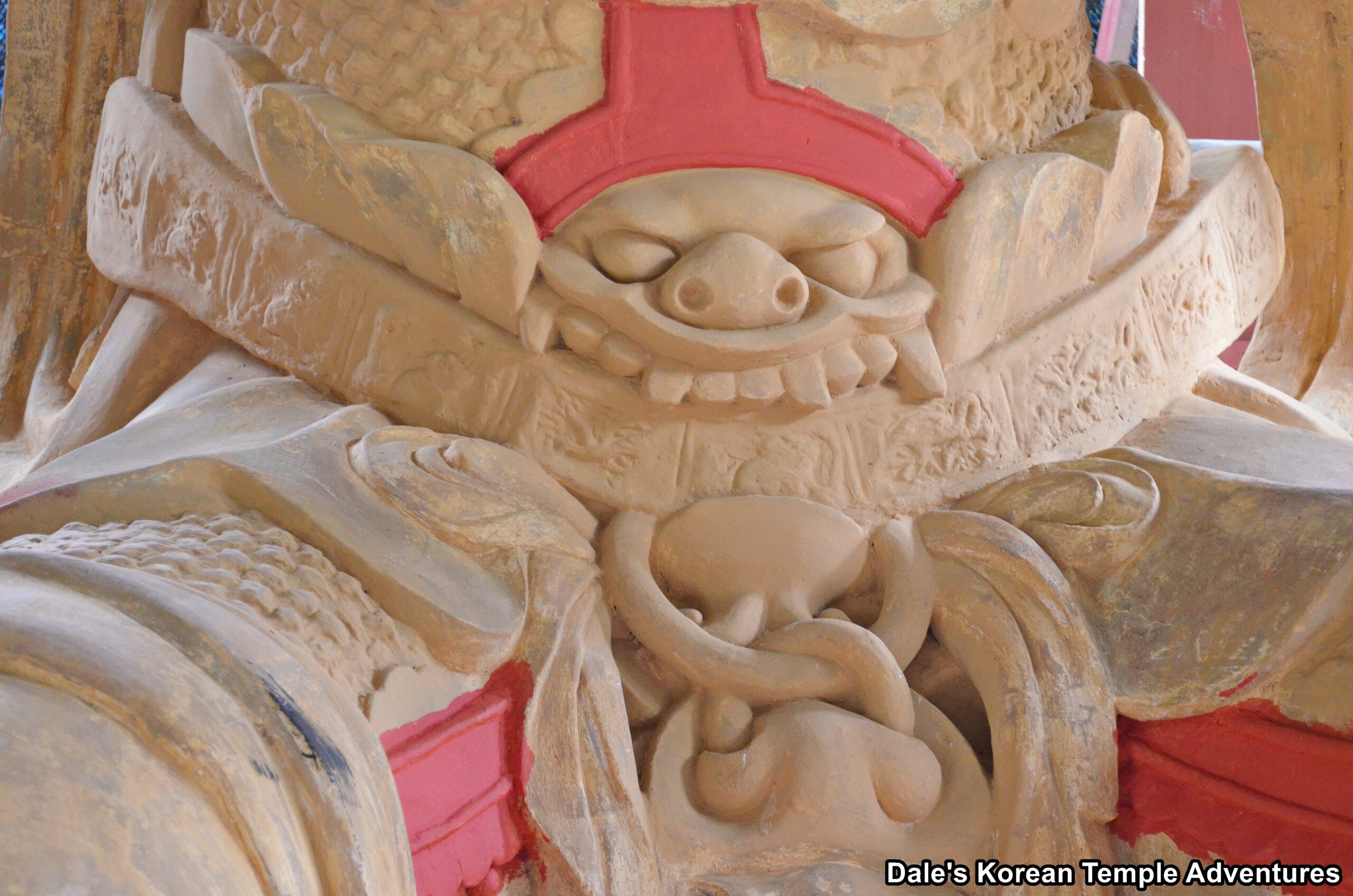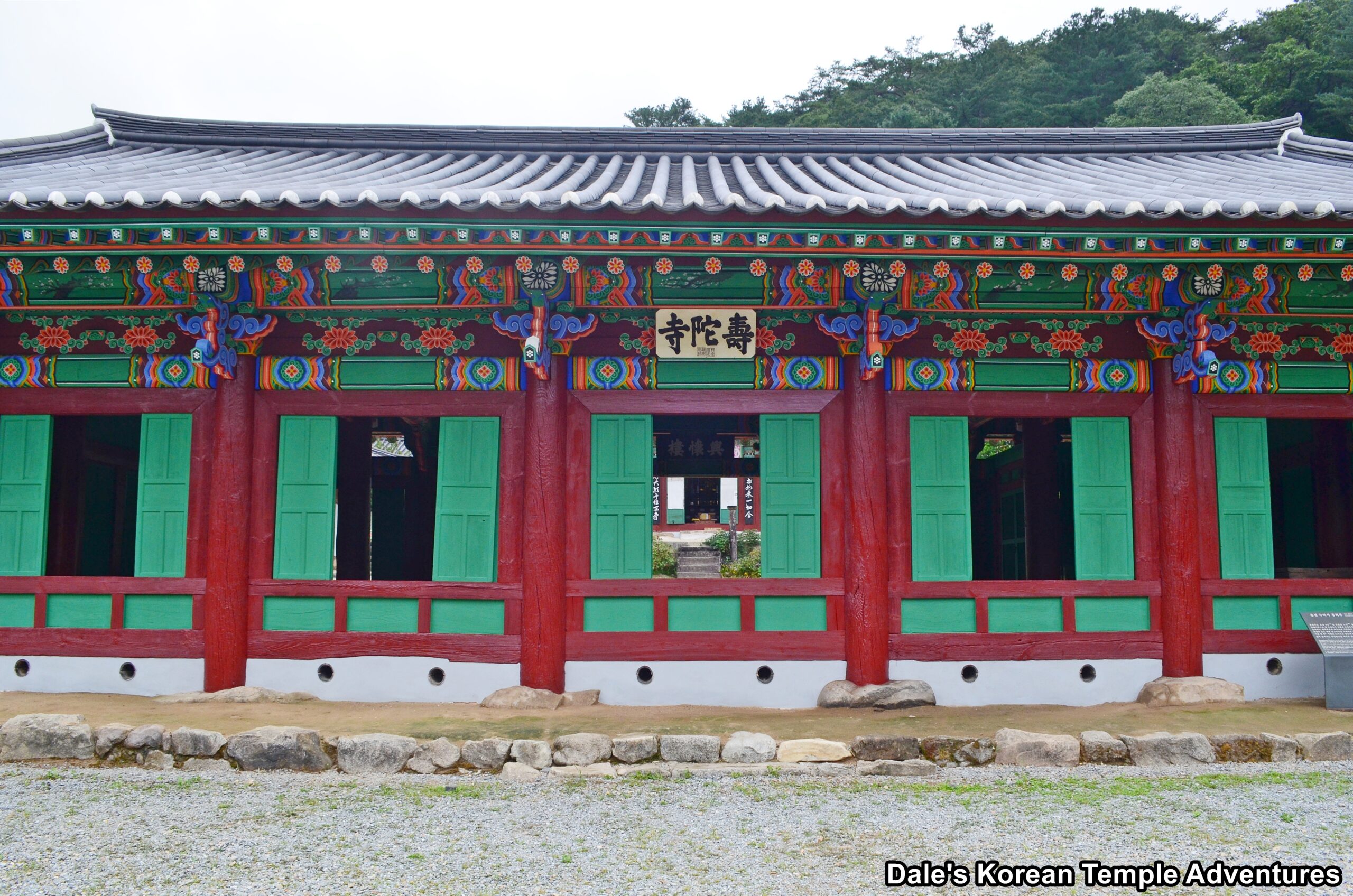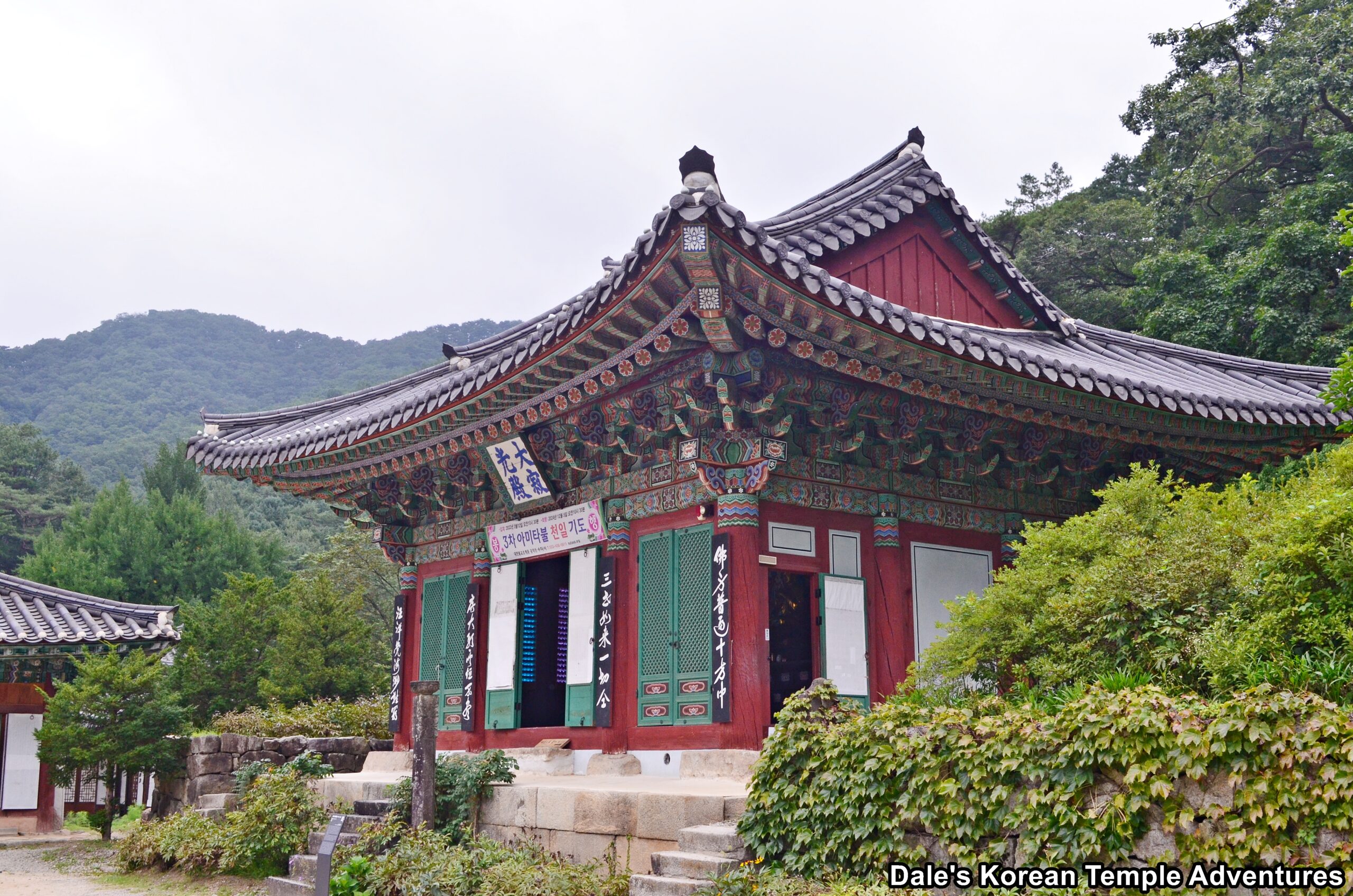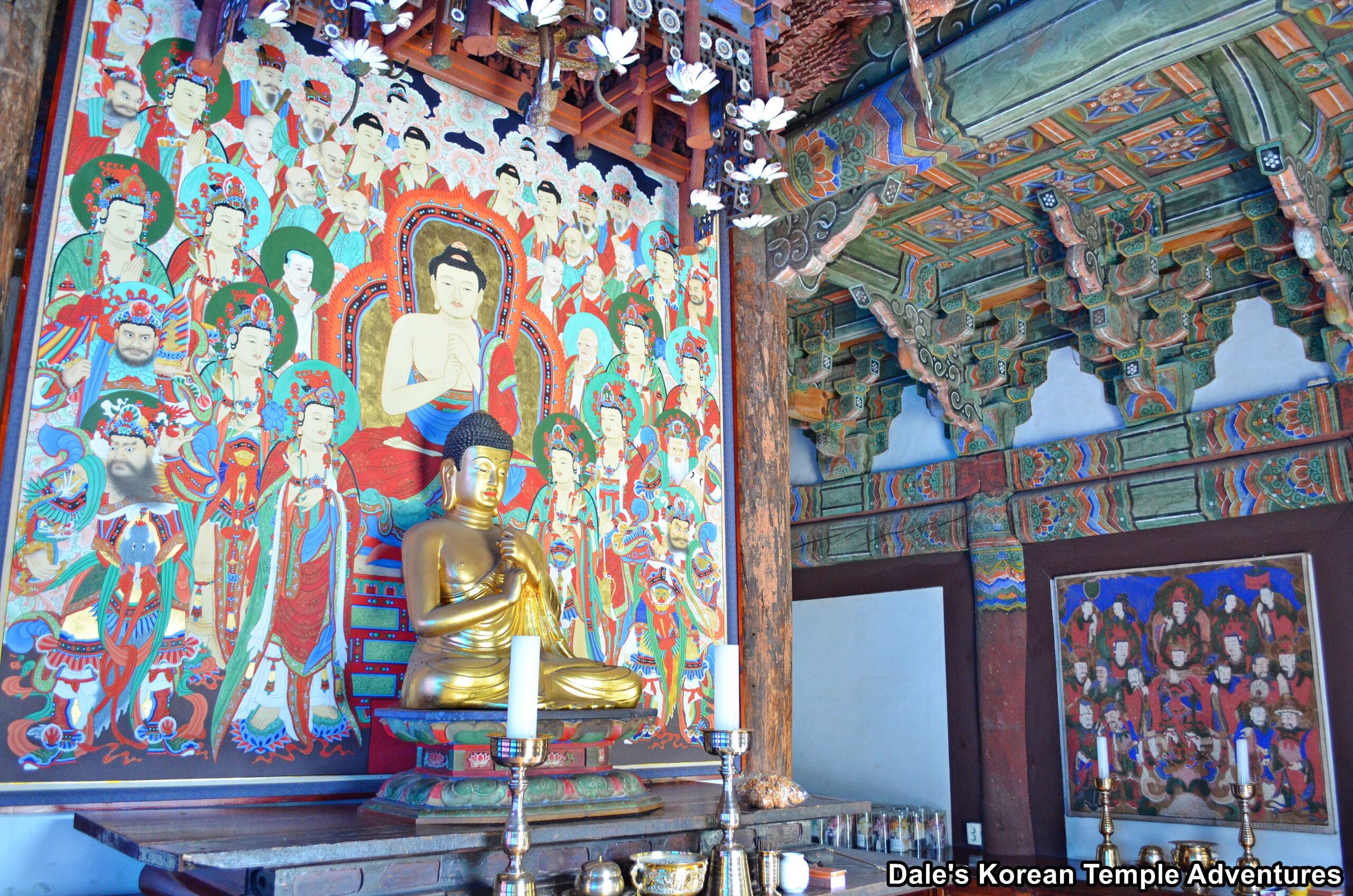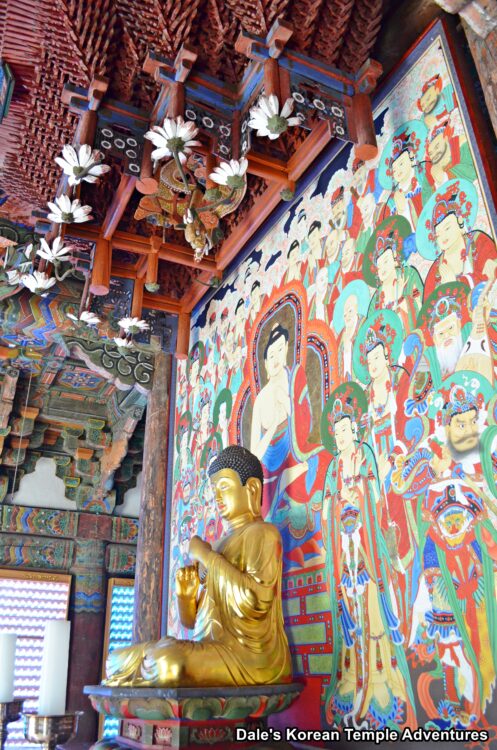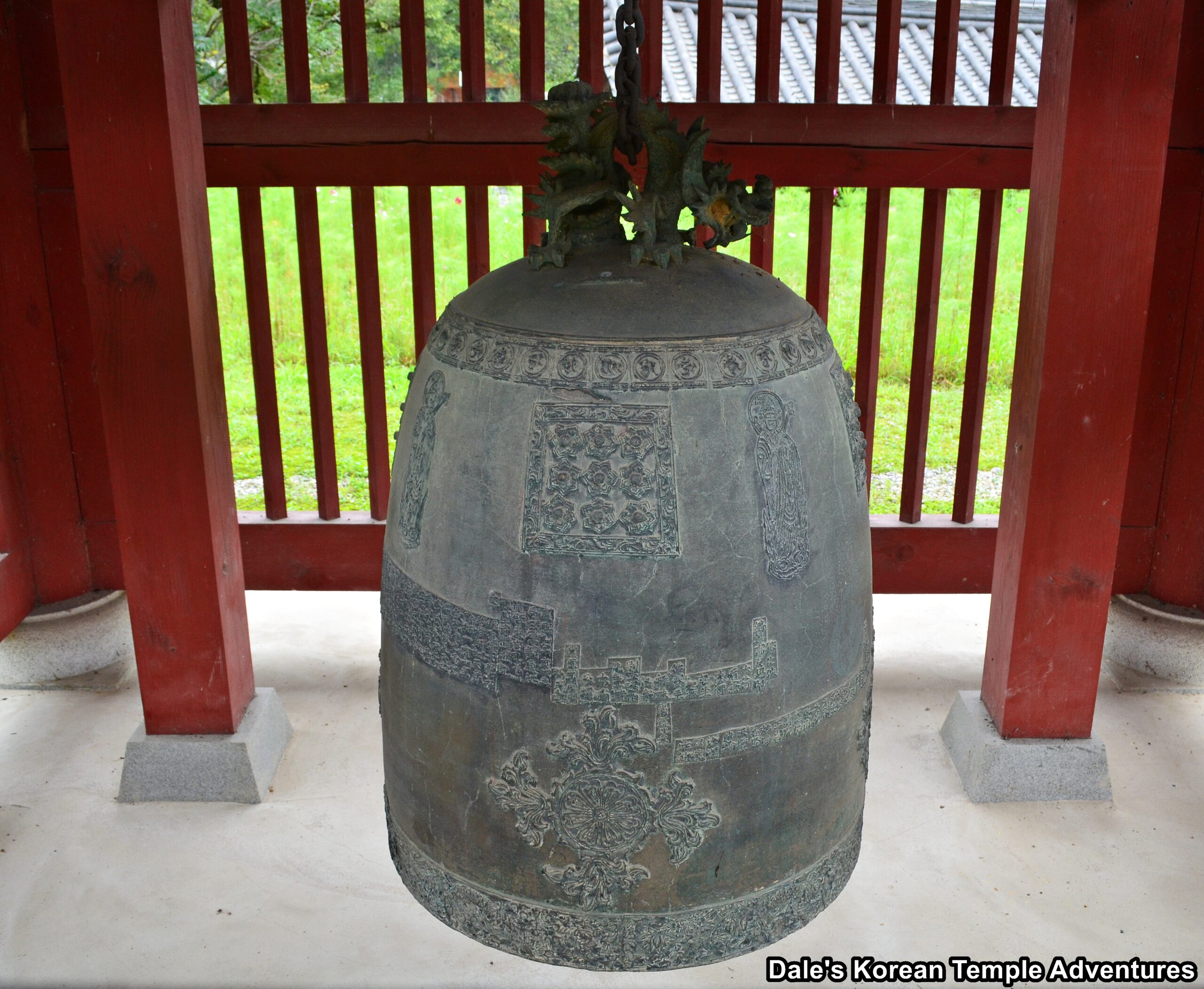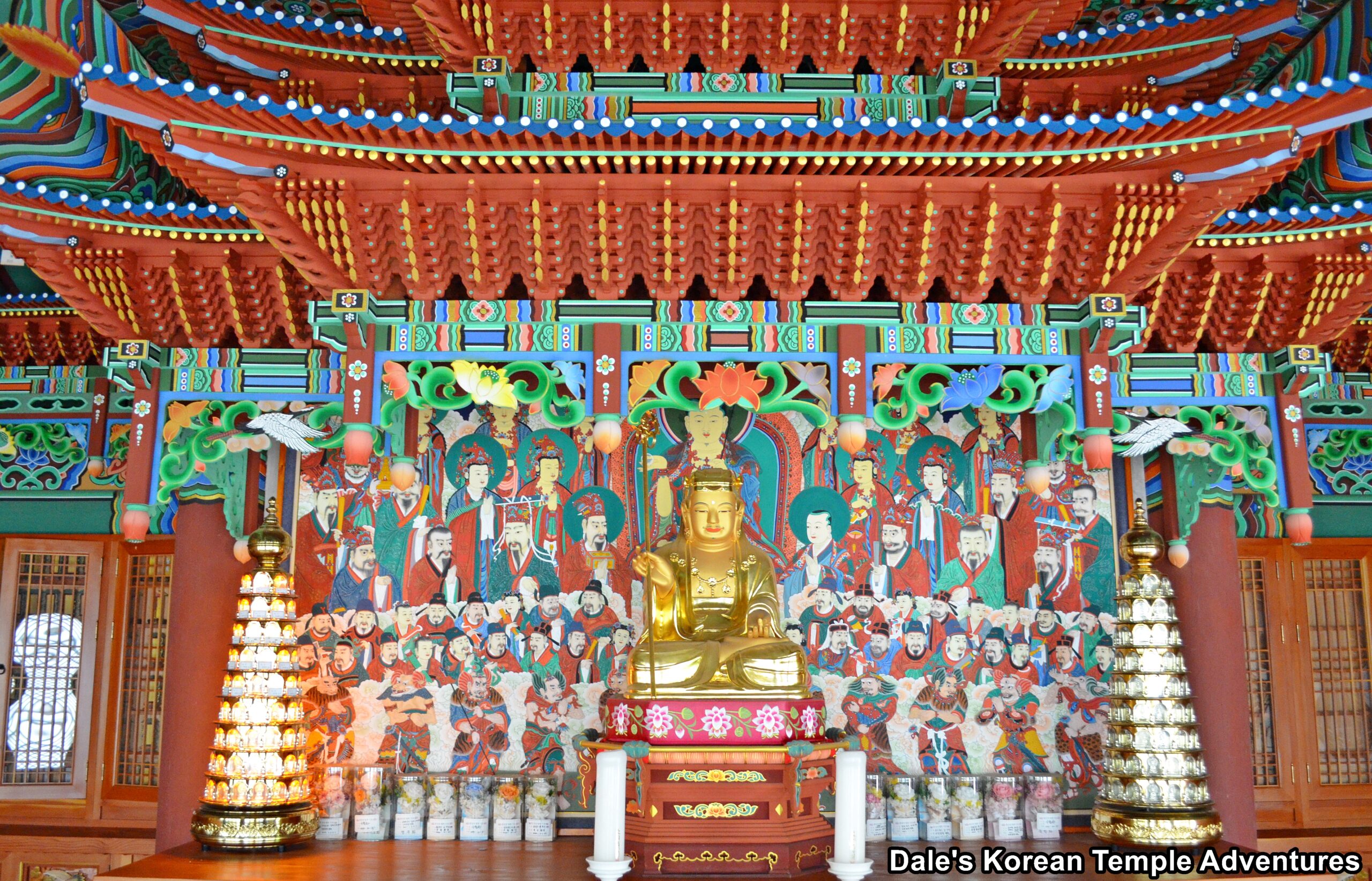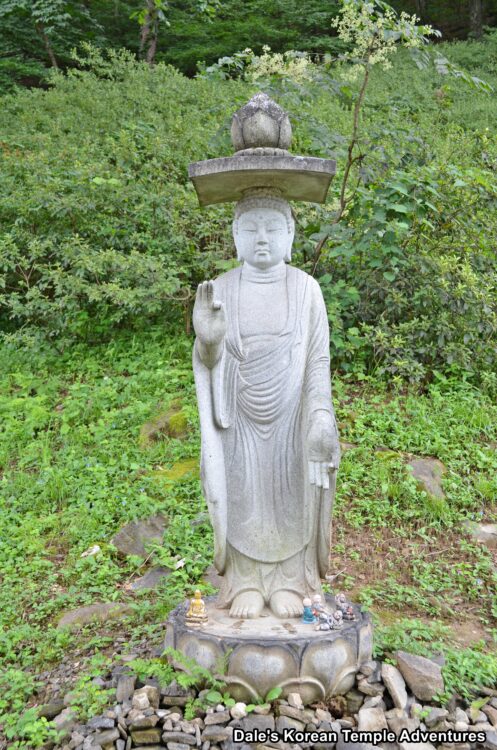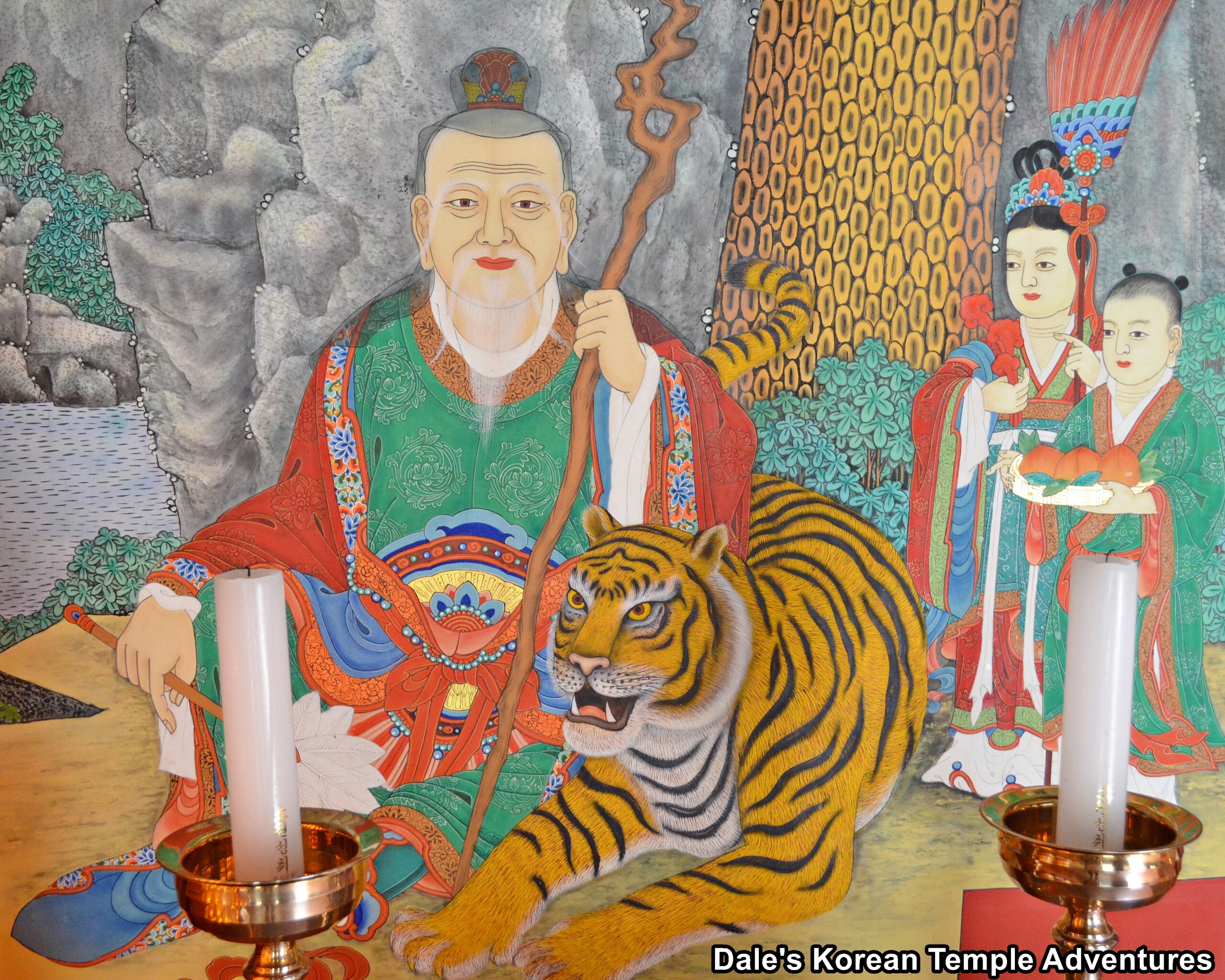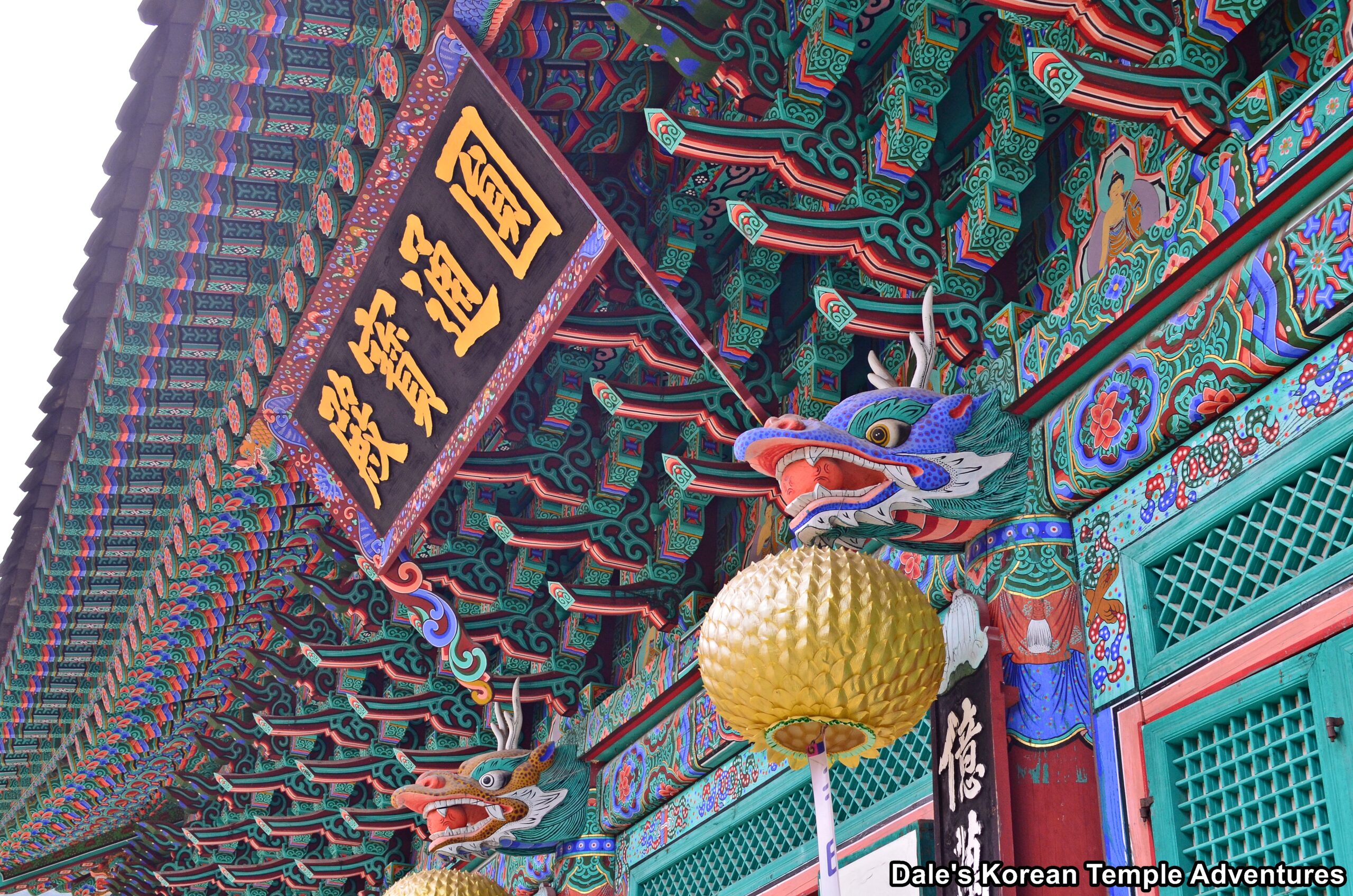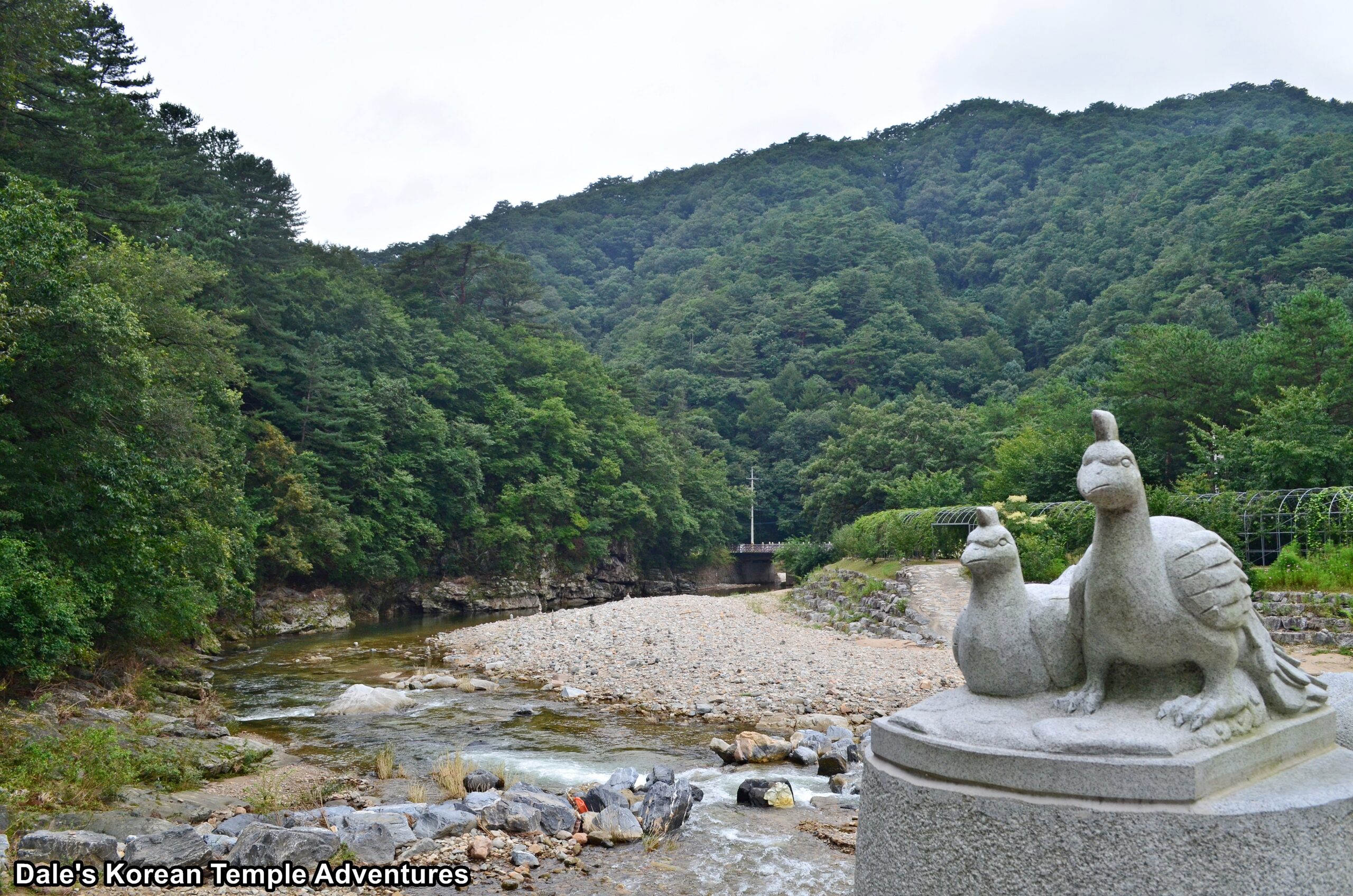Sutasa Temple – 수타사 (Hongcheon, Gangwon-do)

Temple History
Sutasa Temple in Hongcheon, Gangwon-do is located to the west of Mt. Gongjaksan (887.4 m). Sutasa Temple is located in a bend in the Deokchi-cheon River up Sutasa Valley. Purportedly, the temple was first founded in 708 A.D. by the famed monk Wonhyo-daesa (625-686 A.D.). However, since Wonhyo-daesa died in 686 A.D., it’s kind of hard to believe that he would found a temple after his death. And originally, the temple was called Ilwolsa Temple.
The temple was renamed in 1568 to Sutasa Temple. The reason for this change is that it’s believed that where Sutasa Temple is located along the foothills of Mt. Gongjaksan that it resembles a peacock proudly displaying its feathers. And from the bottom of Mt. Gongjaksan, it’s believed that it looks like a giant laying down on its back looking up at the sky. Additionally, the mountain is home to azaleas in the spring, diverse fall foliage in the autumn, and unusual rock formations year round.
However, not long after being renamed, Sutasa Temple was destroyed in 1592 during the Imjin War (1592-1598). Sutasa Temple was rebuilt in 1636 by the monk Gongjam. And in 1647, two monks, Gyecheol and Seungga, helped expand the temple. In 1650, the main gate was built; and in 1658, the Heunghoe-ru was built. Then sixteen years later the Cheonwangmun Gate, and the historic Four Heavenly Kings housed inside it, was built in 1674. More recently, the Samseong-gak hall was built in 1977. And the Wontongbo-jeon Hall was added in 1992.
In total, Sutasa Temple is home to three Gangwon-do Tangible Cultural Properties. They include the Heunghoe-ru Pavilion (#172), the Wooden Seated Avalokitesvara Bodhisattva of Sutasa Temple (#176), and the Terracotta Sacheonwang Statues in Sutasa Temple (#121). How the Terracotta Sacheonwang Statues in Sutasa Temple from 1676 aren’t at least a Korean Treasure is beyond me.
Temple Layout
You first make your way up a meandering trail that makes its way towards the temple grounds. You’ll pass by a budowon with numerous stupas housed inside the green fenced-off area. Continuing along, you’ll next cross over the first of two bridges that span the Deokchi-cheon River. The Deokchi-cheon River is a placid river that calmly flows down the Sutasa Valley and next to the historic temple. Between the first bridge and the second is a trellised tunnel with shrubbery growing around it. Before crossing over the bridge that has decorative stone peacocks adorning either side of the bridge, you’ll most definitely see people playing in the river during summer months.
Having passed over the peacock bridge, you’ll next come to the historic Cheonwangmun Gate. The statues housed inside the Cheonwangmun Gate date back to 1676, and they are among a handful of historic statues that predate the 18th century. The clay exterior was formed over a wooden interior. As was fairly common at this time, the items that each of the Four Heavenly Kings holds in their hands aren’t the items we commonly see nowadays. Instead of holding a pagoda in his hand, Damun-cheonwang (King of the North) holds a lute in his hands at Sutasa Temple. And Jeungjang-cheonwang (The King of the South), instead of holding a sword, the statue is holding a dragon in his hands. Gwangmok-cheonwang (The King of the West), who typically holds a dragon is holding a pagoda. And finally, Jiguk-cheonwang (The King of the East) is holding a sword instead of a lute. So while the Four Heavenly Kings at Sutasa Temple, which were built later in the Joseon Dynasty (1392-1910), and so were further along in the standardization of the items held in their hands, still don’t have the items held in the hands of the kings we see today. Additionally, all four are uniquely designed with expressive and intimidating facial features. And the armour they wear is stylistically superb. Unfortunately when I visited, the Four Heavenly Kings were receiving a new coat of paint.
Beyond the historic Cheonwangmun Gate is the equally historic Heunghoe-ru Pavilion. Rather uniquely, the Heunghoe-ru Pavilion, which was first constructed in 1658, is a one-story structure. Historically, it was used as a lecture hall to teach the dharma. It was also used to conduct the Water and Land Ritual, which is known as the “Suryuk-jae” in Korean. At most other temples, this hall is a two-story structure. The first structure acts as a entry gate to pass under to enter the main temple courtyard, while the second story is used as the lecture hall. So because the Heunghoe-ru Pavilion is only one-story, you need to circumnavigate around either corners of this entry pavilion to gain entry to the rest of the temple grounds.
Having passed around the Heunghoe-ru, you’ll enter into the main temple courtyard at Sutasa Temple. And the first temple structure to greet you is the Daejeokgwang-jeon Hall. The exterior walls are simply painted in the traditional dancheong colours. Stepping inside the Daejeokgwang-jeon Hall, you’ll find a main altar occupied by an image of Birojana-bul (The Buddha of Cosmic Energy). The solitary image of Birojana-bul rests beneath an older, red canopy, or “datjib” in Korean. The ceiling of the shrine hall is painted in intricate flower patterns. And hanging on the far right wall is a smaller Shinjung Taenghwa (Guardian Mural).
To the rear of the Daejeokgwang-jeon Hall is the Myeongbu-jeon Hall. The exterior walls, much like the Daekjeongwang-jeon Hall that stands in front of it, are painted in the traditional dancheong colours. Stepping inside the Myeongbu-jeon Hall, you’ll find an image of Jijang-bosal (The Bodhisattva of the Afterlife) sitting beneath a large red canopy. The image of Jijang-bosal appears rather squarish. And this golden image is backed by a large painting depicting himself, as well as the Siwang (The Ten Kings of the Underworld) and agwi (hungry ghosts).
To the right of the Myeongbu-jeon Hall, and across the courtyard and past a statue of Mireuk-bul (The Future Buddha), is the temple’s Samseong-gak Hall. Once again, the exterior walls are plainly painted in dancheong colours. Entering the shaman shrine hall, you’ll find a set of paintings dedicated to Chilseong (The Seven Stars), Dokseong (The Lonely Saint), and Sanshin (The Mountain Spirit). All three are newer in composition and rather ordinary in design.
And in front of the Samseong-gak Hall is the Wontongbo-jeon Hall. The exterior walls are adorned in simplistic, yet beautiful, Shimu-do (Ox-Herding Murals). The front of the shrine hall is adorned with majestic dragons on either side of the Wontongbo-jeon Hall’s signboard. Stepping inside the Wontongbo-jeon Hall, you’ll find a small, solitary statue of Gwanseeum-bosal (The Bodhisattva of Compassion) on the main altar. This statue is the Wooden Seated Avalokitesvara Bodhisattva of Sutasa Temple. The wooden statue of the Bodhisattva of Compassion dates back to 1758. Originally, the statue was housed at Oksuam Hermitage on the Sutasa Temple grounds. The statue stands just 43 cm in height. Housed inside the statue were sari (crystallized remains), Buddhist prayer texts, and dharani text. As for the statue itself, it has a large, ornate crown adorning her head. And the statue sits atop a large wooden lotus flower pedestal. Additionally, the statue rests under a large, red canopy with swirling protective dragons on the underside of the canopy. The interior of the Wontongbo-jeon Hall is filled with tiny statues of Gwanseeum-bosal. And to the right of the main altar are the partial contents of the historic Gwanseeum-bosal statue, including a single sari of Seokgamoni-bul (The Historical Buddha). Hanging on the far left wall is a large Gamno-do (Sweet Dew Mural). The seven Buddhas at the top of the mural are graceful, while the bottom of the mural depicts Joseon-era life including a tiger attacking a man out for a walk. And hanging on the far right wall is an equally large Shinjung Taenghwa (Guardian Mural).
How To Get There
From the Hongcheon Intercity Bus Terminal, you’ll need to take “Sutasa – 수타사” bus to the “Sutasa-ipgu-hacha – 수타사입구 하차” stop. The bus ride will take 36 minutes over 15 stops. And from where the bus drops you off, you’ll need to walk 15 minutes, or nearly 1 km, to Sutasa Temple.
Overall Rating: 7.5/10
The main highlights to Sutasa Temple are the three Gangwon-do Tangible Cultural Properties, which rather surprisingly, aren’t at least Korean Treasures, especially the Terracotta Sacheonwang Statues in Sutasa Temple. Additionally, the interior of the Daejeokgwang-jeon Hall and the Wontongbo-jeon Hall are stunning. And adding to all of this artistry is the tranquil setting of the temple underneath Mt. Gongjaksan and along the Sutasa Valley. A beautiful location with an equally beautiful temple.
